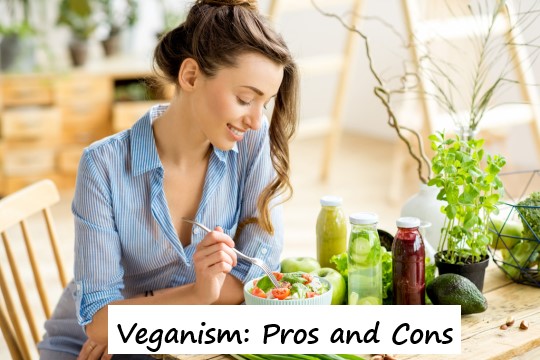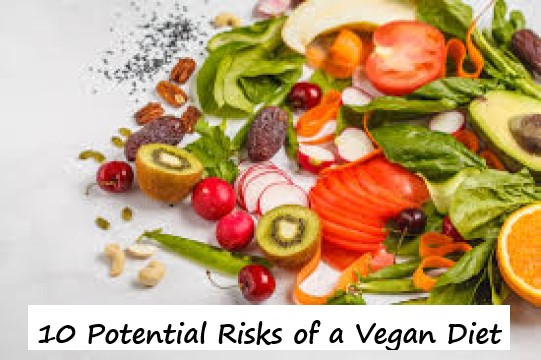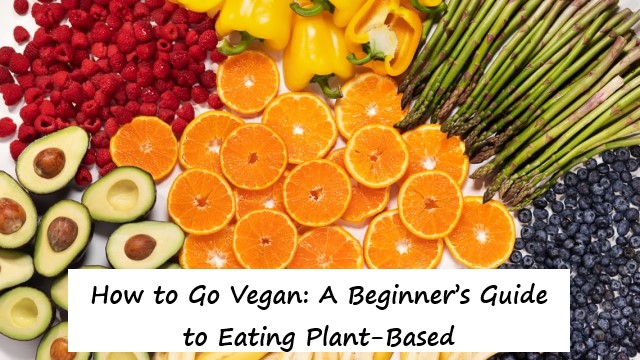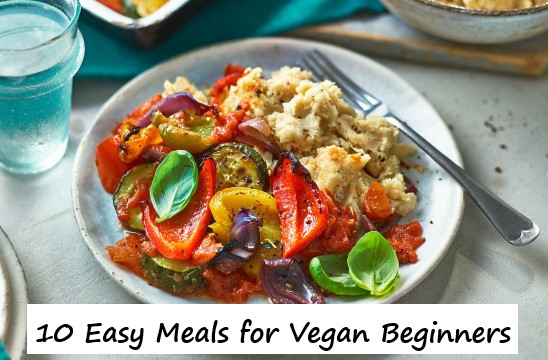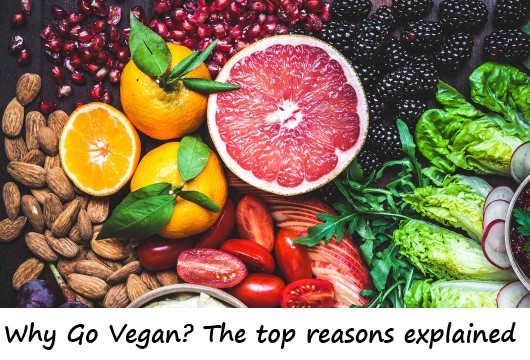A common concern about vegetarian and vegan diets is that they may lack sufficient protein. But vegans can get protein from various plant sources, though some may be better than others.
Many experts agree that a well-planned meatless diet can provide all the nutrients you need, including protein.
That said, certain plant foods contain significantly more protein than others, and new and older studies alike suggest that higher protein diets can promote muscle strength, feelings of fullness, and weight loss.
Here are 18 plant foods that contain a high amount of protein per serving.
Benefits and risks of a vegan diet
Plant-based diets have been linked to several health benefits.
Vegan diets may support weight goals, blood pressure, heart health, and more
For starters, vegans tend to have lower body mass indexes (BMI) than non-vegans, which may be associated with lower chronic disease risk in some populations.
In addition, studies suggest that vegan diets are more effective at helping people lose weight than many other diets, including the Mediterranean diet.
A vegan diet has also been linked to a lower risk of cancer. What’s more, it also appears to reduce pain from arthritis and may further reduce your likelihood of experiencing age-related cognitive decline.
Plant-based diets are also linked to several other health benefits, including lower blood pressure, better-regulated blood sugar levels, and a healthier heart.
Because of this, several health organizations recommend increasing the amount of plant-based protein in our diets.
Learn more about potential benefits of plant-based diets in this websites https://thevegangarden.com/.
Vegan diets may lead to nutritional deficiencies without careful planning
That said, it’s important to keep in mind that not all vegan diets will be equally beneficial.
While well-planned vegan diets made up of mostly minimally processed foods are considered beneficial for all stages of life, those including large amounts of ultra-processed plant foods are not.
Poorly-planned or highly-processed vegan diets may also increase your risk of nutrient deficiencies, especially in vitamin B12, iodine, iron, calcium, zinc, and long-chain omega-3s.
Sprouting, fermenting, and cooking foods in cast-iron cookware can further enhance your body’s ability to absorb the nutrients contained in plant foods.
Minimizing your intake of processed plant foods, while increasing your intake of whole or minimally-processed ones can help reduce the risk of experiencing nutrient deficiencies.
Using supplements and fortified foods to bridge any nutritional gaps can also minimize your risk of experiencing ill effects from a vegan diet.

Plant versus animal protein
Protein is made up of chains of molecules known as amino acids.
There are 20 amino acids found in nature that your body can use to build protein. Out of these 20 amino acids, 9 are considered essential, which means that your body cannot produce them itself, so you need to get them from your diet.
The remaining 11 are considered non-essential, as your body can produce them from the 9 essential amino acids.
Animal protein contains all nine essential amino acids in sufficient amounts. Plants also contain all nine essential amino acids — however, besides a few exceptions, most typically offer a limited amount of at least one essential amino acid.
For instance, beans, lentils, peas, and many vegetables tend to contain low amounts of cysteine and methionine. On the other hand, grains, nuts, and seeds tend to be low in lysine.
Because of this, many people refer to plant foods as “incomplete” sources of protein.
However, as long as you eat a variety of plant-based proteins, this shouldn’t pose a problem. You can still get sufficient amounts of all the essential amino acids your body needs.
1. Seitan
Seitan is a popular protein source for many vegetarians and vegans.
It’s made from gluten, the main protein in wheat. Unlike many soy-based mock meats, it closely resembles the look and texture of meat when cooked.
Also known as wheat meat or wheat gluten, it contains about 25 grams of protein per 3.5 ounces (100 grams), making it one of the richest plant protein sources available.
Seitan is also a good source of selenium and contains small amounts of iron, calcium, and phosphorus.
You can find this meat alternative in the refrigerated section of many grocery stores, especially at health food stores. You can also make your own version with vital wheat gluten.
Seitan can be pan-fried, sautéed, and even grilled, making it easy to incorporate into a variety of recipes.
However, because it contains wheat, people with gluten-related disorders should avoid eating seitan.
2. Tofu, tempeh, and edamame
Tofu, tempeh, and edamame all originate from soybeans and are especially popular in East Asian cuisine.
Soybeans are considered a whole source of protein. This means that they provide your body all the essential amino acids it needs.
Edamame are immature soybeans with a sweet and slightly grassy taste. They need to be steamed or boiled before you eat them. Then, they can be enjoyed on their own or added to soups, salads, sushi, wraps, stir-fries, or rice rolls.
Tofu is made from bean curds pressed together in a process similar to cheesemaking. Meanwhile, tempeh is made by cooking and slightly fermenting mature soybeans, then pressing them into a block.
Tofu doesn’t have much taste on its own, but it easily absorbs the flavor of the ingredients it’s prepared with. Comparatively, tempeh has a characteristic nutty flavor.
Both tofu and tempeh can be used in a variety of recipes, ranging from burgers to soups, stews, curries, and chilis.
All three soy-based proteins contain iron, calcium, and 12–20 grams of protein per 3.5-ounce (100-gram) serving.
Edamame is also rich in folate, vitamin K, and fiber, which can help support digestion and regularity.
On the other hand, tempeh contains probiotics, B vitamins, and minerals, such as magnesium and phosphorus.
3. Lentils
With 18 grams of protein per cooked cup (198 grams), lentils are a great source of protein.
They can be used in a variety of dishes, ranging from fresh salads to hearty soups and spice-infused dahls.
Lentils are also a great source of fiber, providing over half of your recommended daily fiber intake in a single cup (198 grams).
Furthermore, the type of fiber found in lentils has been shown to feed the good bacteria in your colon, which can help promote a healthy gut. Lentils may also reduce your chance of heart disease, diabetes, excess body weight, and certain types of cancer.
In addition, lentils are rich in folate, manganese, and iron. They also contain a hearty dose of antioxidants and other health-promoting plant compounds.
Lentils are popular around the globe, and they’re the basis of Indian dishes known as dal or dahl. If you eat South Asian food often, chances are you’re already a fan of lentils.
4. Beans
Kidney, black, pinto, and most other varieties of beans are extremely important staple foods across cultures and contain high amounts of protein per serving.
Chickpeas, also known as garbanzo beans, are another type of bean with a high protein content.
Most types of beans contain about 15 grams of protein per cooked cup (170 grams). They’re also excellent sources of complex carbs, fiber, iron, folate, phosphorus, potassium, manganese, and several beneficial plant compounds.
Moreover, several studies show that a diet rich in beans and other legumes can help decrease cholesterol levels, manage blood sugar, lower blood pressure, and even reduce belly fat.
Add beans to your diet by making a tasty bowl of homemade chili, or enjoy extra health benefits by sprinkling a dash of turmeric on roasted chickpeas.
5. Nutritional yeast
Nutritional yeast is a deactivated strain of Saccharomyces cerevisiae yeast, which is sold commercially as a yellow powder or flakes.
It has a cheesy flavor, which makes it a popular ingredient in dishes like mashed potatoes and scrambled tofu.
Nutritional yeast can also be sprinkled on top of pasta dishes or even enjoyed as a savory topping on popcorn.
Half an ounce (16 grams) of this complete source of plant protein provides 8 grams of protein and 3 grams of fiber.
Fortified nutritional yeast is also an excellent source of zinc, magnesium, copper, manganese, and all the B vitamins, including vitamin B12.
However, keep in mind that not all types of nutritional yeast are fortified, so be sure to check the label carefully.
6. Spelt and teff
Spelt and teff belong to a category known as ancient grains. Other ancient grains include einkorn, barley, sorghum, and farro.
Spelt is a type of wheat and contains gluten, whereas teff originates from an annual grass, meaning that it’s naturally gluten-free.
Spelt and teff provide 10–11 grams of protein per cooked cup (250 grams), making them higher in protein than other ancient grains.
Both are excellent sources of various nutrients, including complex carbs, fiber, iron, magnesium, phosphorus, and manganese. They also contain B vitamins, zinc, and selenium.
Spelt and teff are versatile alternatives to other grains, such as wheat and rice, and they can be used in many recipes ranging from baked goods to risotto.
In fact, flour made from teff is the key ingredient in injera, a flatbread commonly eaten in East Africa, such as in Ethiopia, Eritrea, and Sudan.
7. Hemp seeds
Hemp seeds come from the Cannabis sativa plant, which is sometimes maligned for belonging to the same family as the cannabis plant.
But hemp seeds contain only trace amounts of tetrahydrocannabinol (THC), the compound that produces the psychoactive effects of cannabis.
Although hemp seeds aren’t as well-known as other seeds, they contain 9 grams of protein in each 3-tablespoon (30-gram) serving.
Hemp seeds also contain high levels of magnesium, iron, calcium, zinc, and selenium. What’s more, they’re a good source of omega-3 and omega-6 fatty acids in the ratio considered optimal for human health.
Interestingly, some studies indicate that the type of fats found in hemp seeds may help reduce inflammation and alleviate symptoms of premenstrual syndrome, menopause, and certain skin conditions.
You can add hemp seeds to your diet by sprinkling some in your smoothie or morning muesli. They can also be used in homemade salad dressings, granola, energy balls, or protein bars.
8. Green peas
Green peas contain nearly 9 grams of protein per cooked cup (160 grams), which is slightly more than a cup (237 mL) of dairy milk.
What’s more, a serving of green peas covers more than 25% of your daily fiber, thiamine, folate, manganese, and vitamin A, C, and K needs.
Green peas are also a good source of iron, magnesium, phosphorus, zinc, copper, and several other B vitamins.
You can use peas in recipes such as pea-and-basil-stuffed ravioli, Thai-inspired pea soup, or pea-and-avocado guacamole.
9. Spirulina
This blue-green algae is definitely a nutritional powerhouse.
A 2-tablespoon (14-gram) serving provides 8 grams of complete protein, in addition to covering 22% of your daily requirements for iron and 95% of your daily copper needs.
Spirulina also contains high amounts of magnesium, riboflavin, manganese, potassium, and small amounts of most of the other nutrients your body needs, including essential fatty acids.
According to some test-tube and animal studies, phycocyanin, a natural pigment found in spirulina, also appears to have powerful antioxidant, anti-inflammatory, and anti-cancer properties.
Furthermore, studies link consuming spirulina to health benefits ranging from a stronger immune system and reduced blood pressure to improved blood sugar and cholesterol levels.
Still, we need more human studies before we can draw conclusions on all of spirulina’s health claims.
10. Amaranth and quinoa
Although amaranth and quinoa are often referred to as ancient or gluten-free grains, they don’t grow from grasses like other cereal grains do. For this reason, they’re technically considered pseudocereals.
Nevertheless, similarly to more commonly known grains, they can be prepared or ground into flours.
Amaranth and quinoa provide 8–9 grams of protein per cooked cup (185 grams) and are complete sources of protein, which is uncommon among grains and pseudocereals.
Plus, amaranth and quinoa are good sources of complex carbs, fiber, iron, manganese, phosphorus, and magnesium.
11. Ezekiel bread and other breads made from sprouted grains
Ezekiel bread is made from organic, sprouted whole grains and legumes. These include wheat, millet, barley, and spelt, as well as soybeans and lentils.
Two slices of Ezekiel bread contain approximately 8 grams of protein, which is slightly more than most other types of bread.
Sprouting grains and legumes increases the number of healthy nutrients they contain and reduces their content of antinutrients, which are compounds that can affect your body’s absorption of certain vitamins and minerals.
In addition, studies show that sprouting increases their content of specific amino acids, such as lysine, which can help boost their overall protein quality.
Similarly, combining grains with legumes could further improve the bread’s amino acid profile.
Sprouting also seems to boost the content of soluble fiber, folate, vitamins C and E, and beta carotene. It may also slightly reduce gluten, which can improve digestion among people with gluten-related disorders.
12. Soy milk
Soy milk is made from soybeans and usually fortified with vitamins and minerals. It can be a great alternative to dairy milk for those who avoid dairy.
Not only does it contain 6 grams of protein per cup (244 mL), it’s also an excellent source of calcium, vitamin D, and vitamin B12.
You can purchase soy milk in most supermarkets. It’s an incredibly versatile product that you can drink on its own or use in a variety of cooking and baking recipes.
However, keep in mind that soy milk and soybeans do not naturally contain vitamin B12, so I recommend picking a fortified variety.
Additionally, some types may contain added sugar, so it’s best to opt for unsweetened varieties whenever possible.
13. Oats and oatmeal
Eating oats is an easy and delicious way to add protein to any diet.
Half a cup (40 grams) of dry oats provides approximately 5 grams of protein and 4 grams of fiber. Oats also contain magnesium, zinc, phosphorus, and folate.
Although oats are not considered a complete protein, they do contain higher quality protein than other commonly consumed grains like rice and wheat.
You can use oats in a variety of recipes ranging from oatmeal to veggie burgers. They can also be ground into flour and used for baking.
14. Wild rice
Wild rice contains approximately 1.5 times as much protein as other long-grain rice varieties, including brown rice and basmati.
A cooked cup (164 grams) provides nearly 7 grams of protein, in addition to healthy amounts of fiber, manganese, magnesium, copper, phosphorus, and B vitamins.
Unlike white rice, wild rice is not stripped of its bran. That’s great from a nutritional perspective, as bran contains fiber and plenty of vitamins and minerals.
However, this causes concerns about arsenic, which can accumulate in the bran of rice crops grown in polluted areas.
Arsenic is a toxic compound that’s associated with a variety of health problems, especially when consumed regularly over long periods of time.
Washing wild rice before cooking it and using plenty of water to boil it can significantly reduce levels of arsenic, along with other heavy metals like lead and cadmium.
15. Chia seeds
Chia seeds are derived from the Salvia hispanica plant, which is native to Mexico and Guatemala.
With 5 grams of protein and 10 grams of fiber per ounce (28 grams), chia seeds definitely deserve their spot on the list of top plant-based proteins.
These little seeds contain high levels of iron, calcium, selenium, and magnesium, as well as omega-3 fatty acids, antioxidants, and other beneficial plant compounds.
They’re also incredibly versatile, thanks to their mild taste and ability to absorb water and form a gel-like substance.
This quality makes them an easy addition to a variety of recipes, ranging from smoothies to baked goods to chia pudding.
16. Nuts, nut butters, and other seeds
Nuts, seeds, and their derived products are great sources of protein.
One ounce (28 grams) contains 5–7 grams of protein, depending on the variety.
Nuts and seeds are also great sources of fiber and healthy fats, along with iron, calcium, magnesium, selenium, phosphorus, vitamin E, and certain B vitamins. They likewise contain antioxidants, among other beneficial plant compounds.
When choosing which nuts and seeds to buy, keep in mind that blanching and roasting may damage the nutrients in nuts. Therefore, it’s best to reach for raw, unblanched versions whenever possible.
Also, try opting for natural nut butters to avoid the oil, sugar, and excess salt often added to many popular brands.
17. Protein-rich fruits and vegetables
Although all fruits and vegetables contain protein, some contain more than others.
Vegetables with the most protein include broccoli, spinach, asparagus, artichokes, potatoes, sweet potatoes, and Brussels sprouts, which typically contain 4–5 grams of protein per cooked cup.
Although technically a grain, sweet corn is another common food that contains about as much protein as these high protein vegetables.
Fresh fruits generally have a lower protein content than vegetables. Those containing the most include guava, cherimoyas, mulberries, blackberries, nectarines, and bananas, which have about 2–4 grams of protein per cup.
18. Mycoprotein
Mycoprotein is a non-animal-based protein derived from Fusarium venenatum, which is a type of fungus.
It’s often used to produce meat substitutes, including veggie burgers, patties, cutlets, and fillets.
The nutritional value can range a bit depending on the specific product, but most contain 15–16 grams of protein per 3.5-ounce (100-gram) serving, along with 5–8 grams of fiber.
Although there are concerns about the safety of mycoprotein related to food allergies, research shows that adverse reactions are very rare.
However, keep in mind that some products made with mycoprotein may also contain egg whites, so be sure to check the label carefully if you’re following a vegan diet or avoiding eggs for other reasons, such as food allergies.
The bottom line
Protein deficiencies among vegetarians and vegans are uncommon, especially for those following a healthy, well-planned diet.
Still, some people may be interested in increasing their plant protein intake for a variety of reasons.
This list can be used as a guide for anyone interested in incorporating more plant-based proteins into their diet.

